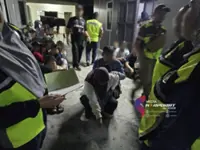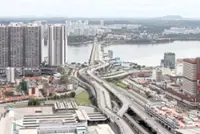Traffic congestion at the Johor Causeway heading to Singapore. The Immigration Department is working on introducing a QR code immigration clearance system. — Filepic
A PILOT project to test the implementation of a QR code immigration clearance system in Johor will be carried out in June, says state Immigration director Baharuddin Tahir.
The pilot project is expected to be carried out at both the Bangunan Sultan Iskandar (BSI) and Sultan Abu Bakar Complex (KSAB) Customs, Immigration and Quarantine (CIQs).





